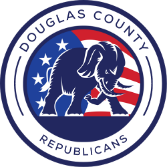Civics: First Amendment
FREEDOM OF RELIGION
The First Amendment guarantees freedom of religion in two clauses:
The “establishment” clause, which prohibits the government from establishing an official church,
The “free exercise” clause that allows people to worship as they please.
FREEDOMS OF SPEECH AND THE PRESS
What is free speech? The definition is not easy, and the courts have identified three types of free speech, each protected at a different level:
Pure speech is the verbal expression of thoughts and opinions before a voluntary audience. The courts have generally provided strong protection of pure speech from government regulation.
Speech-plus involves actions, such as demonstrating or protesting, as well as words. Speech-plus is not generally protected as strictly as is pure speech, because actions can be physically dangerous. The courts have ruled that demonstrators may not obstruct traffic, endanger public safety, or trespass illegally.
Symbolic speech technically involves no speech at all, but it involves symbols that the courts have judged to be forms of free expression. Symbolic actions such as wearing black armbands in school and draft-card burning fit this category. Symbolic speech is highly controversial, and as a rule, the courts have sometimes considered it to be beyond the limits of free speech. However, the Supreme Court did uphold the right of an individual to burn an American flag in the 1989 Texas vs. Johnson decision.
Many of the same principles that apply to freedom of speech apply to the press, but one with special meaning for the press is prior restraint. The courts have ruled that the government may not censor information before it is written and published, except in the most extreme cases of national security.
The “clear and present danger” test is a basic principle for deciding the limits of free speech. It was set by the famous Schenck v. the United States case from World War I. Antiwar activist Charles Schenck was arrested for sending leaflets to prospective army draftees encouraging them to ignore their draft notices. The United States claimed that Schenck threatened national security, and the justices agreed. The principle was established that free speech would not be protected if an individual were a “clear and present danger” to United States security.
–US History.org /gov
FREEDOM OF ASSEMBLY AND PETITION
Freedom of assembly and petition are closely related to freedom of speech, and have been protected in similar ways. Former Chief Justice Charles Evans Hughes wrote, “Peaceable assembly for lawful discussion cannot be made a crime.” Generally, that point of view has prevailed. Freedom of assembly has to be balanced with other people’s rights if it disrupts public order, traffic flow, freedom to go about normal business or peace and quiet. Usually, a group must apply for a permit, but a government must grant a permit provided that officials have the means to prevent major disruptions.
–US History.org /gov
Learn More:

